• “Full of interesting and credible analysis.”
• “An important contribution to the current debate.”
• “A genuinely informative work.”
• “Does not skimp on scholarly detail.”
• “A clear commitment to presenting the fullest possible narrative account of the evolution of the current Roman Missal.”
• “A legitimate claim to being the fullest account of this narrative currently available in English.”
• “Goes a long way in explaining a diminishing of an understanding of the priesthood and the sacrifice offered in the Mass.”
• “I encourage others to read it.”
REVIEWER: Msgr. Andrew R. Wadsworth is a priest of the Archdiocese of Westminster (England). He holds Masters degrees in Italian and theology, and is an accomplished musician. He has taught Latin, Greek and Italian, served as Chaplain at Harrow School and speaks Italian, French, Spanish, Portuguese and some German
He has taken a leading role in England “in promoting the worthy celebration of the liturgy in both the usus recentior [rite of Paul VI] and usus antiquior [traditional rite].”
In March 2009 the Holy See appointed him General Secretary of the International Commission on English in the Liturgy (ICEL) and Executive Director of the ICEL Secretariat in Washington DC.
After Vatican II, ICEL was responsible for producing the official English liturgical translations that conservative Catholics regarded as pedestrian, lacking a sacred “tone” and distorting the meaning of the Latin original texts of the Mass of Paul VI.
With the advent of a neo-conservative movement among the younger clergy in the 1990s, complaints about the original ICEL translations started to be taken seriously. At the Vatican’s behest, ICEL prepared a new English translation of the Missal of Paul VI, which was then approved English-speaking bishops’ conferences. The new translation will become obligatory in Advent 2011.
Conservatives throughout English-speaking world have praised the new translation as more “sacred,” Latinists have praised its accuracy, and musicians have praised it as easier to sing. And all have praised Msgr. Wadsworth’s role in seeing this new translation through to completion.
Articles by Msgr. Wadsworth have recently appeared in The Wanderer (“The Fundamental Importance of Liturgical Chant,” June 30, 2011) and on the New Liturgical Movement website (“ICEL’s Director: New Missal Translation ‘Long Overdue’,” June 30, 2011″)
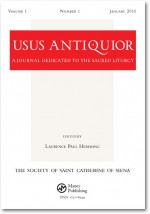 PERIODICAL: Usus Antiquior is a scholarly journal dedicated to the sacred liturgy and published twice a year by the Society of St. Catherine of Siena. Its editor is Rev. Dr. Laurence Paul Hemming, Institute of Advanced Studies, Lancaster University, England. For subscription information and rates, click here. Usus Antiquior does not post all of its content on-line, but downloads of articles and reviews may purchased at this link.
PERIODICAL: Usus Antiquior is a scholarly journal dedicated to the sacred liturgy and published twice a year by the Society of St. Catherine of Siena. Its editor is Rev. Dr. Laurence Paul Hemming, Institute of Advanced Studies, Lancaster University, England. For subscription information and rates, click here. Usus Antiquior does not post all of its content on-line, but downloads of articles and reviews may purchased at this link.
Msgr. Wadsworth’s review of Work of Human Hands appears in Usus Antiquior, Vol. 2, No. 2 (July 2011), 172–3.
THE REVIEW: Since Msgr. Wadsworth is intimately familiar with both the official Latin version of the Missal of Paul VI and the traditional Missal, and since my method in Work of Human Hands was to compare both Missals, I regard him as someone who is particularly well qualified to review my book.
By way of introduction to his comments, Msgr. Wadsworth provides a bit of biographical material about me. For the benefit of readers who may not be familiar with the traditionalist scene, he identifies me as “well-known sedevacantist apologist.”
I. Positive Observations. Msgr. Wadsworth was familiar with my 1991 study which compared the orations in the traditional Missal (collects, secrets and post communions) with their counterparts in the Missal of Paul VI, The Problems with the Prayers of the Modern Mass:
Despite the polemical tone of this work, it is a highly readable and well researched essay whose thesis has subsequently been the subject of a more thorough treatment in the writings of scholars, such as Dr Lauren Pristas.
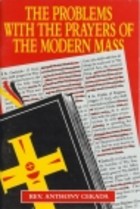 Of the parallels between Problems with the Prayers and Work of Human Hands, Msgr. Wadsworth says:
Of the parallels between Problems with the Prayers and Work of Human Hands, Msgr. Wadsworth says:
Unlike most critiques of the Novus Ordo which tend to concentrate on analysis of the Ordo Missae, Fr Cekada’s work (both in 1991 and 2010) considers the corpus of proper texts in the Missal in an attempt to assemble a comprehensive picture of the theological implications of the liturgical reform. The scarcity of this genre is testimony to the fact that forty years after the Council, we are still awaiting serious scholarship on these texts, the manner in which they were produced and the guiding principles which shaped their composition.
Like Dr. Geoffrey Hull in his review of Work of Human Hands, Msgr. Wadsworth noted the “lack of formal register” (=informal writing style) in the book, and my tendency towards autobiographical anecdotes. At first, he says, he thought this would impede serious discourse. However:
I was wrong. Although presented in a highly personal way, this book does not skimp on scholarly detail. Assertions are usually supported with documentary references and there is a clear commitment to presenting the fullest possible narrative account of the evolution of the current Roman Missal.
Msgr. Wadsworth praises the chronologies in Chapters Two and Three which trace, respectively, the theological origins of the liturgical reform and the successive steps of that reform both before and after Vatican II:
On reflection, it is the assembly of a detailed chronology that is Cekada’s most significant contribution in this study. Drawing heavily on secondary sources (majorly Bugnini, Antonelli and Bouyer), he charts the evolution of the mind of the Missal in terms of the development of the Liturgical Movement. For English readers, he also becomes a portal for a considerable amount of material not generally available in English.
Chapter Two traces the origins of the Liturgical Movement from promising beginnings through the ‘derailing’ influence of Beauduin, Jungmann, Bouyer and Casel. Cekada clearly considers that their work in liturgical studies was so patient of modernism that they sent the whole movement veering off in the wrong direction. This movement ultimately bears fruit in the Pian Reform of Holy Week (1951) which Cekada identifies as the prototype for all subsequent reform and revision. This is Cekada’s most illuminating insight.
On these points overall, Msgr. Wadsworth says:
The study certainly goes a long way in reconstructing the all-important narrative of how the liturgical reform came about. In many ways it makes a legitimate claim to being the fullest account of this narrative currently available in English.
In Chapter Two of Work of Human Hands, I subjected the two “big guns” of the Liturgical Movement, the Jesuit Josef Jungmann and the Oratorian Louis Bouyer, to rather extensive criticism:
[Cekada] explains at length his view of the shortcomings of Jungmann and Bouyer. The first he says commits the Church to archeologism with a corruption theory that advances an historically unsupported view of liturgy in Christian Antiquity. The second multiplies the falsehood by proposing an idealistic form of liturgy based on Lutheran ideals. He adds to this heady cocktail a young Montini totally shaped and formed by modernist liturgical scholarship. Many would now consider that he is right about Jungmann, but less so about Bouyer and Montini.
On the latter point, I noticed among writers in Msgr. Wadsworth’s milieu a particular disinclination to criticize Bouyer. This I attribute to some of the highly unfavorable comments Bouyer later made about certain aspects of the liturgical reform in his short books Liturgy and Architecture (1967) and The Decomposition of Catholicism (1969).
But Bouyer’s remarks in these works, I think, merely reflected his contradictory temperament. One author opined that when Bouyer stepped up to a microphone, you never knew what he was going to say.
Despite this, Msgr. Wadsworth says that Chapter Five of Work of Human Hands, which criticizes Bouyer’s influence on the modernist ideology underlying the New Mass, offers:
A reasonably full consideration of the iconic importance of the General Instruction on the Roman Missal identifies many elements that have shaped post-conciliar liturgical culture, with its inevitable implications for ecclesiology and sacramental theology
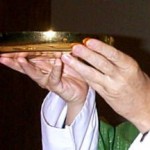 Chapter Eleven of Work of Human Hands is devoted to analyzing the destruction of the traditional offertory rite and its replacement the Mass of Paul VI with The Preparation of the Gifts. Here:
Chapter Eleven of Work of Human Hands is devoted to analyzing the destruction of the traditional offertory rite and its replacement the Mass of Paul VI with The Preparation of the Gifts. Here:
Cekada’s identification of a paradigm shift in Why Change the Offertory? goes a long way in explaining a diminishing of an understanding of the priesthood and the sacrifice offered in the Mass, as does his inference of a deliberate wish to subvert on the part of some.
Constructing a proper bibliography is a time-consuming requirement for any writing based on many different research sources (in the case of Work of Human Hands, twenty pages covering thirty years’ worth of research) but one often feels the exercise is pointless because the results usually go unnoticed. Hence, it was encouraging to read Msgr. Wadsworth’s comment that:
A welcomed final feature of the book is an extensive bibliography which points the interested reader towards a vast amount of useful commentary.
II. Criticisms and Disputed Points. There are four of these, and they offer a good opportunity for some give and take.
1. Theology vs. Preference. The introductory chapter of Work of Human Hands is entitled “Old Mass vs. New Mass: What’s the Fuss About?” First, Msgr. Wadsworth correctly notes:
Cekada sites his debate in the climate of renewed interest in traditional rites in the wake of the motu proprio Summorum Pontificum. He goes to considerable lengths to express his sincere view that attachment to the traditional liturgy without a through-going theological rationale, amounts to no more than personal preference based on aesthetic considerations.
Indeed, I do think this has generally been the case, and Msgr. Wadsworth is correct in adding, “Obviously, this is highly contentious.”
But apart from rejecting the new liturgy in favor of the old liturgy on the basis of a clear theological rationale, I can’t think of anything other basis for doing so, apart from aesthetics, nostalgia or simple preference. Once you get away from the theology behind the two rites, what else do you have?
Msgr. Wadsworth adds that my insistence on a theological rationale for adhering to the old rites is contentious because:
Cekada makes it clear that in his view, authentic Catholicism at the present time only admits the sedevacantist position. This would condemn the vast majority of the million or so Catholics who use traditional rites in their worship to the charge of schism and heresy.
But here Msgr. Wadsworth is simply mistaken. I do not treat these issues at all in Work of Human Hands.
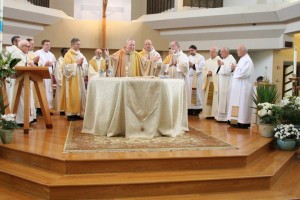 2. The Eucharistic Prayers. In the Mass of Paul VI, the invariable Canon of the old Mass was replaced with multiple Eucharistic Prayers (EPs). My treatment of these in Chapter Twelve, says Msgr. Wadsworth, “renders little that is original, however, and falls below the mark in relation to many more comprehensive studies on the Ordo Missae.”
2. The Eucharistic Prayers. In the Mass of Paul VI, the invariable Canon of the old Mass was replaced with multiple Eucharistic Prayers (EPs). My treatment of these in Chapter Twelve, says Msgr. Wadsworth, “renders little that is original, however, and falls below the mark in relation to many more comprehensive studies on the Ordo Missae.”
To be sure, this chapter does go over a lot of old ground: the origins and invariability of the Roman Canon, its silent recitation, the artificial structure of the new EPs and the “all vs. many” dispute over the translations of the Words of Consecration. But this was done for the benefit of those who are “new” to the old Mass.
I cheerfully concede, however, that in the case of at least one EP whose historical antecedents I was able to treat in only a summary fashion (EP2) a far more comprehensive treatment did indeed appear at about the same time that Work of Human Hands was published. This is Mathieu Smyth and Paul Bradshaw’s erudite study “The Anaphora of the So-called Apostolic Tradition and the Roman Eucharistic Prayer,” Usus Antiquior 1.1 (January 2010), 5–25.
That said, Chapter Twelve does treat a number of topics that I, as least, have not encountered in traditionalist critiques of the Mass of Paul VI: a chronology of the movement to change the Canon and the motives of its leaders, the influence of ecumenism on the new texts, the horizontal 60s theology of the six EPs for Reconciliation and for Various Needs, an a discussion of the recasting of the Words of Consecration as Words of the Lord in an “institution narrative.”
I note in passing that Msgr Wadsworth, like Dr. Hull, thought the title for the chapter on the EPs was too provocative: “Deplorable Impoverishment.” However, I merely lifted this phrase from Bugnini’s characterization of using the Roman Canon exclusively as “a deplorable impoverishment that had been a typical result of centuries of liturgical decadence.”
I was employing the expression ironically. It is likely that Msgr. Wadsworth missed this because as an Englishmen he would naturally tend to put the concept “American irony” into the same category as “German humor” — theoretically possible, but rarely encountered in the real world.
3. Pre-Vatican II Changes and the New Mass. Msgr. Wadsworth seems to be of two minds about my treatment of the connection between the 1951-1967 liturgical changes and the Mass of Paul VI.
On one hand, as we have seen above, he says that my identification of the 1951 Easter Vigil as the prototype for all subsequent reform and revision is perhaps my “most illuminating insight.” On the other hand, Msgr. Wadsworth later says:
Here as at many earlier stages in the book, Cekada claims rather too much for the reforms of 1962 and 1965, giving the ludicrous impression that these revisions constitute the beginnings of the Novus Ordo.
I think, though, that a rereading of the evidence (see the quotes from Bugnini, Braga, and Paul VI on pp. 49, 57–8, 61, 67-8 of Work of Human Hands) shows that my claim is far from ludicrous. The creators of the New Mass themselves saw a straight line connection between pre- and post-Vatican II changes.
4. Theological Critique and Context. Since the threat to Catholic doctrine inherent in the Mass of Paul VI forms part of the thesis of Work of Human Hands, it seemed natural enough to denominate the book as a “theological critique.” Msgr. Wadsworth says that “author claims a lot in offering ‘a theological critique of the Mass of Paul VI’,” but that he is “not convinced that this is ultimately what is offered.” Further:
[Cekada] fails to cite his observations in a wider theological discourse, perhaps fearing a compromise of his sedevacantist position. This tends to mean that whereas he is persuasive in arguing the genesis of modern liturgical reforms, his explanation of their consequences both at the time and in our present time, is often unconvincing.
However, my explanation of the thesis of the book (pp. 7–8) explicitly lays out the theological issue that will be examined: the new rite’s treatment of the nature of the Mass, the priesthood and the Real Presence, together with the influence of ecumenism and modernisn apparent in the new rite.
These theological themes and their development throughout the whole book can be easily traced by referring to the index, which we tried to make particularly thorough and detailed precisely for this reason. (See in particular the entries under “Ecumenism” and “Modernism.”) The themes can also be found in the summaries which appear at the end of each chapter.
Finally, Chapter Fourteen offers a synthesis of the theological problems with the new rite that have been raised and criticized in the foregoing thirteen chapters.
For these reasons, I find Msgr. Wadsworth’s demurrers about Work of Human Hands as a theological critique to be a bit mystifying.
III. Conclusions. In addition to the positive comments about particular points that we have already quoted above in section I, I was very pleased that Msgr. Wadsworth added a few more general words of recommendation for Work of Human Hands:
“[T]he book is full of interesting and credible analysis.
“I remain grateful for this study which … represents a genuinely informative work and an important contribution to the current debate.
“I hope this brief review will encourage others to read it.”
Often the best one can hope for from a reviewer is that he actually reads the book and gives the author a fair hearing. A reviewer who is intimately conversant subject matter of the book, takes the time to analyze its contents carefully, praises it and then urges other to read it is every author’s dream.
I thank the Editor of Usus Antiquior, the Rev. Dr. Lawrence Paul Hemming, for his inspired choice of Msgr. Wadsworth to review Work of Human Hands, and I thank Msgr. Wadsworth for his careful consideration of my book and for his kind words.
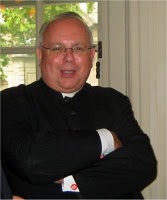
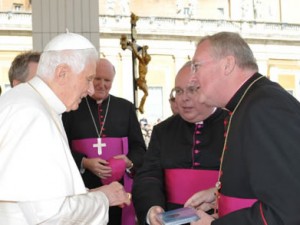
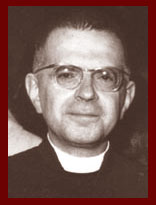
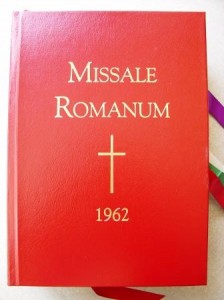
4 Comments